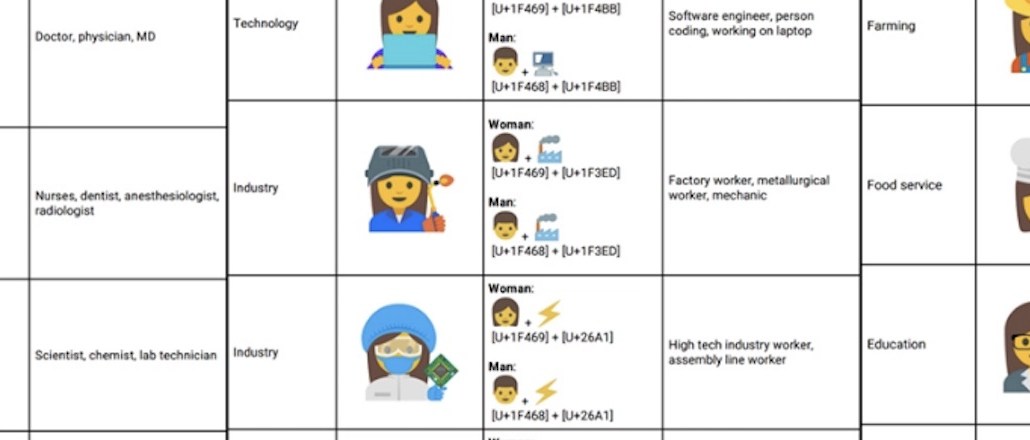Register by Jan 13 to save on passes and connect with marketers from Uber, Bose and more

Emojis are replacing Barbies as the battleground where the fight over the portrayal of women is being waged.
A group of Google employees is pushing for 13 new emojis to be approved with a “goal of highlighting the diversity of women’s careers and empower girls everywhere,” according to their proposal submitted to the Unicode Consortium this week.
“No matter where you look, women are gaining visibility and recognition as never before,” the developers said in a its proposal. “Isn’t it time that emoji also reflect the reality that women play a key role in every walk of life and in every profession?”
As of now, emojis depicting women are overwhelmingly stereotypical: There’s nail painting and hair grooming; there’s flamenco dancing and twin burlesque bunnies. Men, meanwhile, are cops and doctors and athletes, as Always pointed out as part of their “Like a Girl” campaign. Google’s proposal includes doctors, farmers, graduates and professors for both sexes. There’s even a David Bowie tribute emoji.
Making unicode emoji less basic with 13 true-to-life representations of professional women: https://t.co/aSOBFkKMGa pic.twitter.com/BfKMSSXgpg
— Google Design (@GoogleDesign) May 11, 2016
Unicode Consortium is currently mulling which emojis will be allowed in its next batch, due to arrive on people’s phones in mid-2017. However, the Googlers might have an advantage since the Consortium’s president, Mark Davis, is also a Google employee.
More in Marketing

What does media spend look like for 2026? It could be worse — and it might be
Forecasts for 2026 media spend range from 6.6% on the lower end to over 10% but the primary beneficiaries will be commerce, social and search.

Pitch deck: How Amazon is emerging as the proof layer for TV spend
Amazon is positioning itself to advertisers as the “first-stop shop” for planning, buying, optimizing and measuring TV.

Here are the 2025 brand winners and losers of tariffs
Tariffs completely upended the retail industry in 2025 — and no company was left unscathed.





